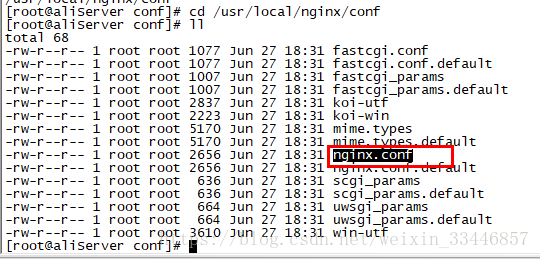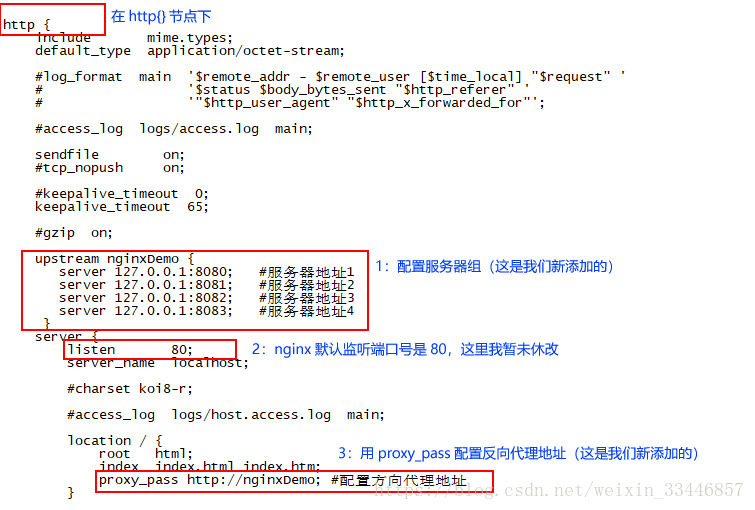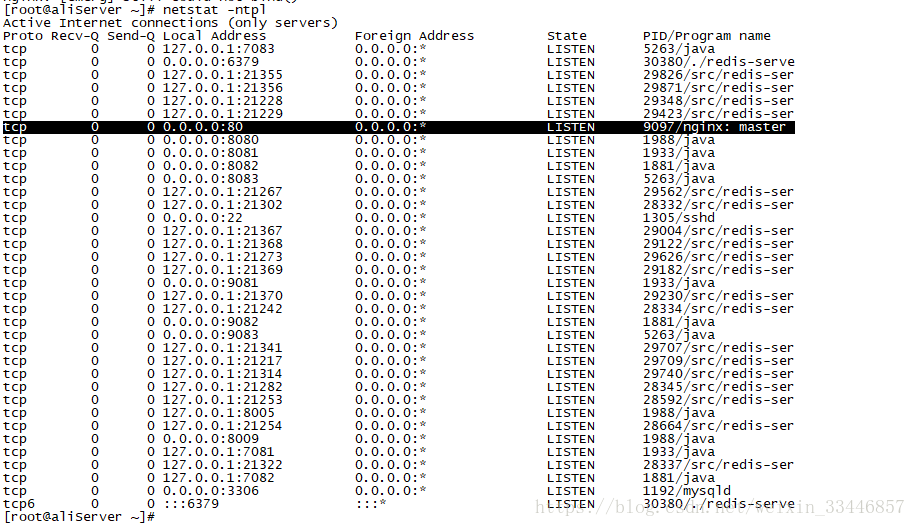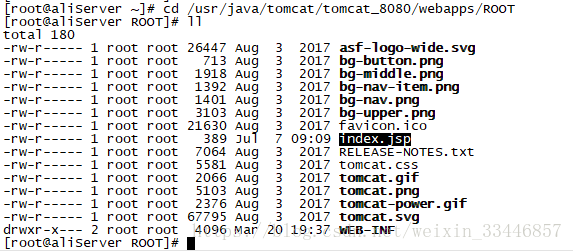
One: Enter the conf directory under the nginx directory
This is my nginx installation directory:
[root@aliserver ~]# cd /usr/local/nginx/conf
Two: Edit nginx.conf

[root@aliserver conf]# vi nginx.conf
Three: Configure server group
1: Add upstream configuration between http{} nodes. (Be careful not to write localhost, otherwise the access speed will be very slow)
upstream nginxdemo {
server 127.0.0.1:8081; #服务器地址1
server 127.0.0.1:8082; #服务器地址2
server 127.0.0.1:8082; #服务器地址3
server 127.0.0.1:8083; #服务器地址4
}2: Modify the port number that nginx listens to 80
nginx default port is 80, I have not changed it here yet. Remain unchanged
server {
listen 80; #默认是80,也可更改为其他的,当然已被占用的端口号不能写。
......
}3: Use proxy_pass to configure the reverse proxy address
In location\{}, "http://" cannot be missing here, and the following address must be the same as In the first step, the name defined by upstream should be consistent (that is, the name of nginxdemo is customized and needs to be consistent in both places)
location / {
root html;
index index.html index.htm;
proxy_pass http://nginxdemo; #配置方向代理地址
}After the configuration is completed, as shown in the figure:

Four: Start nginx
My installation path of nginx is /usr/local/nginx
So my startup command Yes:
[root@aliserver ~]# /usr/local/nginx/sbin/nginx
Because nginx has been started before installation, and now it reports an error that the port number is occupied when it is started again

At this time we use Command to check the occupancy of each port number
[root@aliserver ~]# netstat -ntpl

We see that nginx is occupied by the pid 9097, use kill -9 to kill it
[root@aliserver ~]# kill -9 9097
Start it again nginx
[root@aliserver ~]# /usr/local/nginx/sbin/nginx
has no response, that’s right. At this time, enter your server address

in the browser, indicating that nginx started successfully. As for whether the configuration is correct and whether the load can be balanced, let's start verifying it now. . .
5: Verification
We all know that when nginx load balancing, all client requests go through nginx, then nginx can decide who to forward these requests to. If Server A has more sufficient resources (more CPUs, larger memory, etc.), and Server B does not have as strong a processing capability as Server A. Then nginx will forward more requests to Server A and fewer requests to Server B, so that This achieves load balancing, and even if one of the servers is down, users can still access the website normally.
Before verification, you need to make some preparations.
1: Prepare a simpler jsp, such as:

I have 4 tomcats installed on a server, so I prepared The four index.jsp files
are
<title>tomcat8080<title> <h1>hellow tomcat_8080</h1> <title>tomcat8081<title> <h1>hellow tomcat_8081</h1> <title>tomcat8082<title> <h1>hellow tomcat_8082</h1> <title>tomcat8083<title> <h1>hellow tomcat_8083</h1>
. What needs to be noted here is: the name of the jsp file must be index.jsp, because the picture of tomcat starting successfully is as shown in the figure:

Reading is webapps/root/index.jsp in the tomcat installation directory
My address is:/usr/java/tomcat/tomcat_8080/ webapps/root

Overwrite each tomcat's default index.jsp file with the four previously prepared index.jsp files.
Start each tomcat
[root@aliserver bin]# ./startup.sh
At this time, we enter xxx.xxx.xx.xx:8080 in the browser. You will find that the kitten no longer appears, but. . . . . .




The above is the detailed content of How to configure Nginx load balancing multiple tomcats under Linux. For more information, please follow other related articles on the PHP Chinese website!




